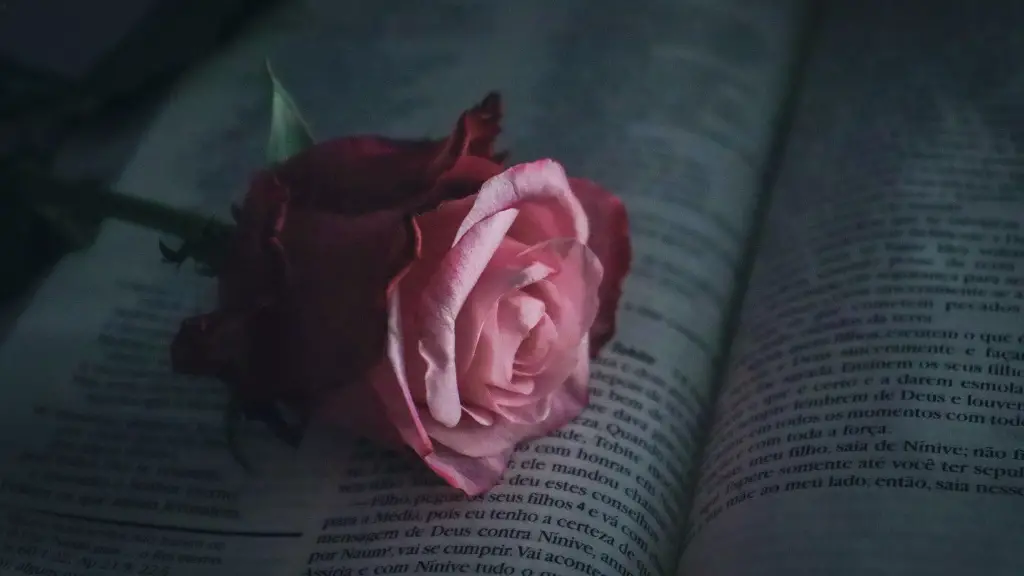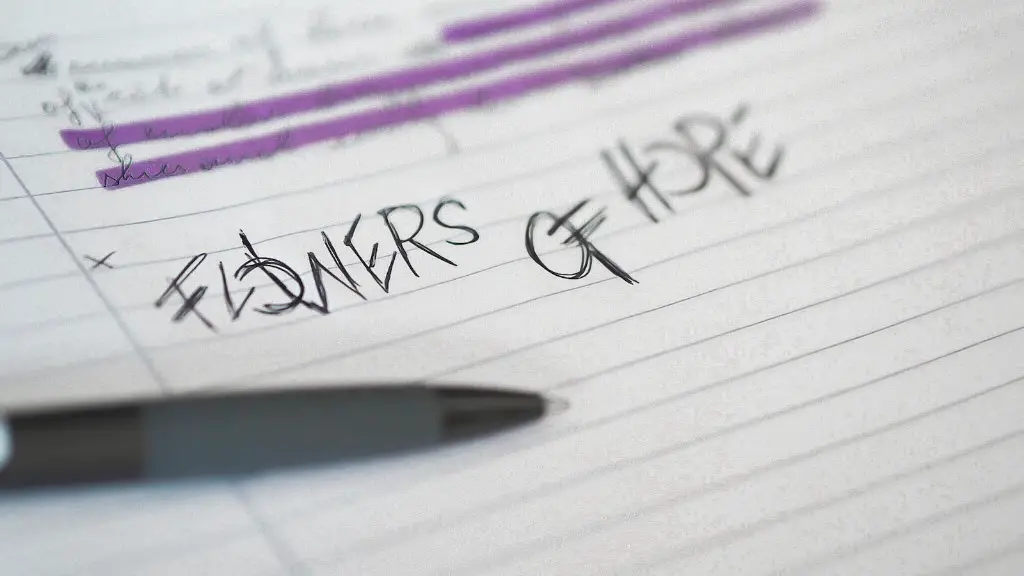A Foot in Poetry
Poetry has been around since the dawn of time, captivating its audiences with words of beauty and intensity. From the earliest known written works of the Sumerian’s to the musky harangues of the bards of Celtic Britain, people have sought a way to express the inexpressible. Whether it is love, pain or the sweet smell of a summers day, poetry has been making its mark upon civilisations throughout history.
Today, poetry is still a valued source of expression and communication. It often goes hand in hand with music to help convey the emotion behind what is being said in a way that mere words are unable to achieve. Poets use rhyme and meter, as well as the power of metaphor, allusion and allegory to bring life to their work, engaging the listener and enabling them to connect to the poem on an instantaneously intimate level.
The beauty of poetry in terms of metre and rhyme is that these elements alone can evoke emotion and drama. Without the need for expensive and elaborate costume and elaborate staging, a few words are enough to set the heart racing as the poet takes the listener on a journey to places they could only ever dream of. This is evident in the works of many of the world’s most highly acclaimed poets, who, despite a wide range of backgrounds and styles, all have a thing or two in common: a gift for expression that goes beyond the written word.
Indeed, it is no coincidence that so many of the world’s greatest poets have come from disadvantaged backgrounds. An ability to express emotions, feelings and ideas with the power of words has enabled them to transcend their upbringing and is testament to the way in which poetry can have such a profound impact on those who read or hear it.
Moreover, poetry can be an extremely effective tool for teaching. By taking a look at the work of a variety of poets, pupils can gain a better understanding and appreciation of what is being expressed, enabling them to better assess and analyse the words in front of them. In addition, some educationalists argue that poetry is an excellent way of helping to develop a child’s memorisation and recall skills.
As Michael Drayton, an early English poet and playwright put it: ‘Whether my fame be blown up abroad one day, or I time-eaten quite away with age, I shall have left a foot in poetry’. It is clear, then, that a foot in poetry can be a valuable asset, one that can help to shape a person’s life for the better and stands testament to the power of language.
The Art of the Sonnet
One of the oldest and most iconic of poetic forms is that of the sonnet; defined as a short poem with fourteen lines written in iambic pentameter. The form is believed to have originated in the 13th century with Italian poet Giacomo da Lentini, who is credited with having created the first sonnet. As the name suggests, the poetry form was popular with the Italian writers of the Italian Renaissance and can be found in the works of Shakespeare and other renowned writers such as Ben Jonson and Edmund Spenser.
The four lines of the sonnet include two quatrains and two tercets. A quatrain consists of four lines, with each line having eight syllables, while a tercet is a three-line poem, with each line having eight syllables. This regular rhyme and metre make it ideal for use as a mnemonic aid for memorising words, phrases and facts. The rhyme scheme is often abab cdcd efef gg, but can vary depending on the writer.
Most importantly, the sonnet is often used to convey a powerful and moving message. Love is a common theme, with the poets’ words being able to go deeper than mere words, to a love between two people that cannot be physically expressed. By cleverly using the powerful imagery of the form’s regular metre and rhyme, the poets are able to evoke an emotion that is real and tangible.
The sonnet is a regularly used form of poetry that has gone from strength to strength since its inception and shows no signs of waning in popularity. Not only is it an ideal medium for expressing an emotion or idea, but it is also an ideal tool for memorising and recalling information quickly. In an era where time is of the essence, it is easy to see why the sonnet is still a hugely important poetic form.
The Power of a Haiku
For those wishing to dip their toes in the poetic pool, the humble haiku is an ideal start. Having originated in 14th Century Japan, the haiku is a three-line poem composed of seventeen syllables, structured as five-seven-five. Presenting a simple but highly powerful way of communicating in few words, the haiku is arguably the taste of poetry that most people choose to sample first.
The essence of this ancient poetic form is its focus upon nature, depicting the beauty and awe of the world around us and, in doing so, linking a human emotion to something as insignificant as a flower or a bird. This allows the reader to join the haiku’s author in their appreciation of their surroundings, from the tiniest of flowers to the most vast and extravagant horizon.
Often, haikus will convey a deeper meaning or emotion beneath the surface of the words, one that takes you by surprise as the hidden meanings are revealed. This is known as the ‘yugen’ in Japanese, a mysterious depth that can only be found and felt through the power of the haiku. This feeling of connection to nature is timeless and appeals to anyone who delves into the depths of a haiku.
A powerful and versatile poetry form, the haiku has been used in many different ways and in many different contexts. For those who wish to become passionate about the poetic form, the haiku is a great place to start, as its simplicity and elegance can unlock a secret world of wonder and emotion.
The Persistence of Prose
The form of prose poem can, at first glance, appear to be a contradiction in terms, with prose traditionally being used to tell a story and a poem to express emotion. However, the prose poem has become an increasingly popular form in recent years and has become a powerful tool for expressing emotion in an interesting, creative way.
By mixing the immediacy of prose with the emotion and depth of poetry, the prose poem has become increasingly popular, with writers finding many uses for it. This flexibility, combined with its ability to capture the imagination in an innovative way, has meant that the prose poem is now a popular form of expression for both established and aspiring writers alike.
Also, the prose poem is often used to give an insight into the inner thoughts of characters, with the lack of form enabling a writer to transport the reader into the mind of the narrator, allowing them to see the world through their eyes. The lack of structure can also make the prose poem an effective vehicle to explore the darker side of human nature, as the poet is unconstrained by forms, allowing a greater degree of freedom.
As evidenced, then, the prose poem is a form that has many uses and can be employed in a variety of contexts in order to effectively communicate an idea or emotion. Its versatility, combined with its stunning artistic quality, makes it an invaluable tool for the modern writer looking to express something in a unique way.
The Rhythmic Power of Slam Poetry
If metaphor and rhyme are not your strong suits, fear not, for there is another route to poetic expression: slam poetry. This form of performance-based poetry has been gaining in popularity since its inception in the 1980s and has become one of the most popular forms of poetic performance.
Slam poetry is heavily reliant on the power of voice and rhythm, with the poet relying on their ability to move an audience with their words. The structure is far looser than in other forms of poetry, with the poet often taking a more direct approach than the traditional approaches of rhyme and metre.
The use of rhythm and repetition is a feature of slam poetry performances, with the poet blending the message with their words to create an emotional effect. This often makes slam poetry a more immediate and powerful form of communication than other forms, as the audience are able to connect with the performance on a much more immediate and visceral level.
In addition, there is a much more communal element to slam poetry, with artists interacting directly with the audience, sharing their experiences and using their words to transcend the barriers between writer and reader. The sense of connection that a performer can establish with the audience can often be far greater than in other forms of poetry.
Clearly, then, slam poetry is a much more direct form of poetic expression and one which can be highly effective in the right hands. With the right message, words and rhythm, slam poetry can captivate an audience and help sentiments to be shared in a powerful and touching way.
The Performance Element
Unlike many other forms of poetry, some forms of poetry invite, even require, performance to be included in their delivery. From ancient bardic tradition to the modern spoken word performance, the delivery of the poem is arguably as important as its content.
The use of performance can take the poem to another level, enabling the poet to interact with the audience and create a more intimate connection. This connection can be particularly powerful when the poem is about a powerful emotion or subject. Performance poetry can also have theatrical and comedic elements, allowing the poet the freedom to explore new dimensions in the poem without fitting it into a certain structure.
By using performance, the poet can also create a dynamic way of captivating their audience and engage with them in a way that a piece of written poetry could never achieve. With this form of expression, the poet can encourage their listeners to connect to the poem on a much deeper level, enabling the poem to effect real change in their lives.
By combining the elements of the written and spoken word, then, the poetabliviouss the opportunity to create a potent, emotive performance that can transport people to a different time and a different place. By allowing their words to flow, the power of the performance can have a lasting effect on the minds and hearts of their viewers, creating a truly unforgettable experience.





